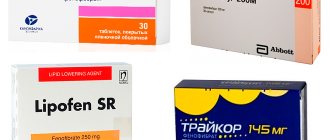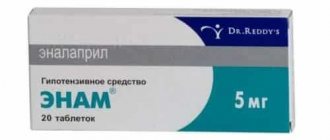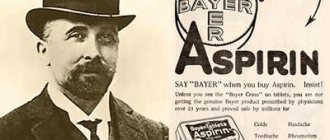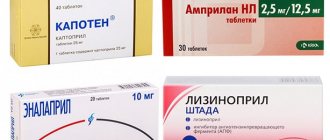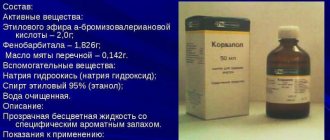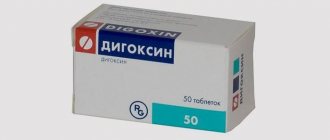The main side effects of statins are muscle pain, fatigue, liver damage, digestive disorders, increased blood sugar, and the risk of type 2 diabetes. Less known but common problems among people taking statins are memory and thinking problems similar to dementia. The side effects of cholesterol pills are a concern for people who take them. It is suspected that pharmaceutical companies are trying to downplay the incidence of problems with their drugs.
Side effects of statins: detailed article
There is an increased risk of statin side effects in people who:
- taking multiple cholesterol medications at the same time (don't do this!);
- over 65 years old;
- suffer from kidney or liver diseases;
- drink a lot of alcohol.
Drinking a lot of alcohol means more than two drinks a day for men under 65. For men over 65 years of age, as well as for all women, no more than one serving of alcohol per day is allowed. One serving of alcohol is 10-15 grams of pure alcohol. One can of beer 0.33 l, one glass of wine or a shot of strong 40-proof alcoholic drink. If you drink more alcohol than indicated above, you should not be treated with statins to avoid liver problems. Discuss this with your doctor.
Latest generation statins: rosuvastatin
- Crestor
- Mertenil
- Roxera
- Rosecard
If you are at high risk of heart attack and stroke, you should take statins, despite the possible side effects. High-risk patients are patients with hypertension, diabetes mellitus, coronary heart disease, atherosclerosis of the lower extremities, as well as people who have undergone stenting or coronary bypass surgery. They should only stop taking statins if the side effects become intolerable. Because no other medications or dietary supplements can also significantly reduce the risk of cardiovascular disaster and prolong life.
Side effects of statins
| Pain in muscles and joints | The most common side effect. Muscle problems can cause mild discomfort or be so severe that they make your daily life difficult. For example, it will become difficult to climb stairs or even walk. |
| Rhabdomyolysis | Destruction of muscle tissue, as a result of which substances that damage the kidneys enter the blood. The patient experiences acute pain and symptoms of renal failure. A deadly but extremely rare side effect. |
| Liver damage | Taking statins may cause worse blood test results for ALT, AST, and other liver enzymes. But this does not mean that liver function is impaired. Typically, patients do not experience any symptoms. There is no need to stop taking medications. In 2012, the US Department of Health (FDA) reported that the danger of statins to the liver is less than previously thought. |
| Digestive disorders | Taking statins can cause nausea, bloating, diarrhea, or, conversely, constipation. In fact, this rarely happens. But statins can worsen digestive disorders that a patient already had before starting treatment with cholesterol drugs. Try taking the medicine in the evening with food. |
| Increased blood sugar | Statins increase blood sugar and increase insulin resistance. People predisposed to type 2 diabetes have an increased risk of developing the disease. Patients with metabolic syndrome - overweight, hypertension, poor blood tests for cholesterol and triglycerides - should be concerned. However, you can take preventive measures and not stop taking statins. |
| Thinking and memory disorders | Pharmaceutical companies pretend these cholesterol pill side effects don't exist. In fact, they are quite common and create many problems for patients and their relatives. For example, the patient may forget where he was going or who he even is. There may be lapses in memory for recent events. |
When selecting and adjusting the dosage of statins, you need to focus less on “bad” and “good” cholesterol, and more on C-reactive protein. The main purpose of taking medications is not to reduce “bad” cholesterol, but to extinguish chronic, low-grade inflammation. Watch the video to find out whether you need to take these medications or not.
Read in detail about the inflammatory nature of cardiovascular diseases in the article “Atherosclerosis: treatment and prevention.” Monitor how blood test results for C-reactive protein change under the influence of statins. You may find that it is enough for you to take the minimum dosage of these medications. And the lower the dosage, the lower the risk of side effects.
Detailed information about medications:
- Rosuvastatin
- Atorvastatin
- Simvastatin
- Lovastatin
Features of prescribing and taking statins
Have you been struggling with CHOLESTEROL for many years without success?
Head of the Institute: “You will be amazed at how easy it is to lower your cholesterol just by taking it every day.
Cardiovascular diseases have long become the leading ones in the structure of general morbidity among the population. Gone are the days when patients died from infectious diseases and their complications. Today, diseases associated with vascular atherosclerosis are at the forefront - stroke, myocardial infarction, obliterating diseases of the extremities, and renal vessels. Both for the treatment and prevention of these diseases, drugs that have a lipid-lowering effect are suitable, that is, capable of reducing the level of lipoproteins and cholesterol. They are statins. There are other groups of drugs that have a similar effect. But due to the large number of pleiotropic (additional positive) effects, statin therapy is the priority today. How to take statins, constantly or in courses, at what time and in what doses?
- Indications for prescribing drugs
- Course use or continuous treatment with statins?
- Monitoring treatment effectiveness
- What other parameters should you focus on during statin therapy?
Indications for prescribing drugs
Statins for cholesterol are taken for preventive and therapeutic purposes. It is this fact that allows us to recognize this group of drugs as the most effective and most prescribed by therapists and cardiologists around the world.
Our readers successfully use Aterol to lower cholesterol. Seeing how popular this product is, we decided to bring it to your attention. Read more here...
The most important indication for their use is the prevention of cardiovascular accidents.
Doctors are afraid of strokes and heart attacks, because these conditions lead, if not to death, then to a decrease in the quality of life and the need to constantly take medications. There is a scale for assessing total cardiovascular risk. It determines the likelihood of developing the notorious heart attacks or strokes in a specific group of patients over the next decade.
There are 4 risk groups. Criteria for classifying a patient into a particular class include:
- The fact of smoking.
- Age.
- Systolic blood pressure.
- Total cholesterol level.
- High density lipoprotein concentration.
- Floor.
The first group is characterized by a low risk of developing strokes and myocardial infarction. Taking statins in this situation is advisable after attempts to reduce cholesterol levels through lifestyle changes and modification of the daily diet. For patients with average risk (risk 2), the approach is approximately the same. Only the cholesterol level at which it is necessary to switch to drug correction is lower.
Individuals with a greater than 10% chance of developing strokes and heart attacks, or those at high risk, are more common in older age. If your cholesterol level is less than 5.2 mmol/l, you do not need to take lipid-lowering drugs. You can limit yourself to diet. But if this indicator is greater than the specified limit, the need to begin treatment with statins is considered. Patients at very high risk are a special group. They need to be prescribed these medications immediately at the appointment. Unconditional indications for the use of statins are the combination of hypocholesterolemia (total cholesterol >5.2 mmol/l) with significant arterial stenosis, atherosclerosis of peripheral arteries, abdominal aortic aneurysm, diabetes mellitus or a history of vascular accidents. These include: acute cerebrovascular accident, acute myocardial infarction, transient ischemic attack. In addition, statins should be taken for dyslipidemia. We are talking about metabolic diseases accompanied by an increase in the level of cholesterol or triacylglycerides, or a joint increase in them.
Course use or continuous treatment with statins?
How to take lipid-lowering drugs (lowering blood cholesterol) correctly? Cardiologists believe that these medications must be taken for life.
Previously, the tactic of gradually increasing the dose of the drug was considered correct.
That is, the initial dosage was small, and, as a rule, depended on the initial level of cholesterol or low-density lipoproteins. Modern clinical studies show that increasing the dose of statins does not lead to an improvement in the lipid profile. This means that the initially chosen dosage must be taken continuously.
Course use of these drugs is not advisable. Very often, patients mistakenly believe that after drinking these drugs for a while, they can get rid of the problem. According to the results of a biochemical study, the target level of cholesterol and low-density lipoproteins has been achieved. This means that it makes no sense to continue taking statins - they are mistaken.
The mistake is that stopping the drug causes cholesterol levels to rise back. Moreover, it can exceed the initial level. Therefore, taking statins only for a certain time, stopping treatment soon, is an unjustified step. When asked how long statins should be taken, doctors answer that they should be used constantly. Except for the situations that will be discussed below.
Monitoring treatment effectiveness
A person taking statins should visit the doctor periodically. The frequency of such visits is regulated by the doctor.
The doctor monitors how the patient’s condition has changed during the treatment. He, first of all, evaluates the parameters of lipid metabolism. Mostly he is interested in the concentration of cholesterol and low-density lipoproteins. If the patient suffers from metabolic syndrome or diabetes mellitus, a calculated indicator such as non-HDL cholesterol can be used as a criterion for effectiveness.
At what cholesterol level can therapy be considered effective? There are target indicators that should be targeted depending on the already described risk groups for the likelihood of developing cardiovascular accidents.
For very high-risk patients, serum cholesterol under statin control should not be more than 4.0 mmol/L.
This is important to observe when treating such patients. For high, medium, and low risks, these indicators are 4.5; 5.0 and 5.5 respectively. Monitor cholesterol levels every 6 weeks after treatment. If cholesterol, when studying the biochemical composition of the blood, has reached the target recommended values, then a person taking statins should be tested for the same indicators once a year.
What other parameters should you focus on during statin therapy?
The described drugs are eliminated by the liver. This means that long-term use of drugs from this group will have an effect on this organ. It is possible to prevent drug-induced damage to liver cells if the following parameters of a biochemical blood test are determined in a timely manner:
- Aspartate aminotransferrase (AST).
- Alanine aminotransferrase (ALT).
- Total bilirubin.
- Creatine phosphokinase (CPK).
Before recommending statins, it is necessary to take a test to determine the concentration of the above enzymes. An increase in AST or ALT will be a reason to delay the start of statin therapy. This period is necessary for the doctor to carry out diagnostic measures to determine the cause of this laboratory finding. During control measurements after 3-4 weeks, persistent hyperenzymemia is a reason to prescribe other lipid-lowering drugs.
During treatment with statins, these indicators should be monitored at least once every six months, and with recent prescription - 4 times a year.
If ALT or AST increases more than threefold, treatment may be discontinued. This is a temporary measure. Over a period of 3-6 weeks, a diagnostic search is conducted. The blood test is then repeated. If enzyme levels decrease or normalize, treatment can be resumed. When hyperenzymemia is insignificant - no more than 3 norms are exceeded, statins are taken in the same regimen.
Creatine phosphokinase is responsible for muscle damage. After all, the liver is not the only target of statins. A very small percentage of cases of these medications are accompanied by a condition called rhabdomyolysis. This is the destruction of striated muscles, which is dangerous due to the appearance of signs of renal failure.
Complaints of muscle pain will help prompt the doctor to think that the patient may have this complication. It is necessary to differentiate these sensations, since they can be caused by physical activity, the presence of rheumatological diseases (polymyositis and dermatomyositis), as well as alcohol consumption. If muscle pain is intolerable, as well as if the CPK level is ten or more times higher than normal, statin therapy is canceled. But the lipid profile is corrected using other means that affect lipid metabolism.
About statins
The effect of statins on the human body with elevated levels of cholesterol and other lipids in the blood is associated with the ability of these medications to block the work of an enzyme called HMG-CoA reductase. This enzyme is involved in the formation of cholesterol in liver cells, and blocking it allows you to reduce the level of cholesterol in the blood plasma.
Statins are highly effective drugs for controlling the level of cholesterol and low-density lipoproteins in human blood.
Statins are prescribed to patients who have certain indications for the use of these drugs:
- Prevention of myocardial infarction in patients with angina pectoris and impaired patency of the coronary arteries due to the development of the atherosclerotic process in them.
- Prevention of ischemic stroke associated with impaired blood supply to the brain. If there is a risk of developing hemorrhagic stroke, the prescription of this group of medications should be treated with great caution.
- Statins are indicated for patients who have already had a myocardial infarction. There is strong scientific evidence that taking medications after the event has a significant effect on life expectancy and reduces the risk of relapse.
- In cases of severe atherosclerosis of any localization, cholesterol synthesis enzyme inhibitors also have a positive effect on the human body.
Statins are powerful medications used to normalize cholesterol levels.
In addition, it is important to indicate risk factors for the development of complications from statin therapy:
- The patient's age is more than 65 years.
- Simultaneous use of several medications for hypercholesterolemia.
- The presence of chronic pathology of the liver and/or kidneys.
- Drinking alcoholic beverages.
If the patient has these factors, statins should be prescribed with great caution, having established constant medical control over the functions of the main body systems.
The prescription of cholesterol formation inhibitors is indicated for all patients who have a high risk of developing ischemic damage to the heart, brain and other organs, despite the possible development of side effects of the drugs.
How to take statins - in the morning or in the evening?
- High cholesterol: dangers
- Statins: pharmacology
- Admission rules
Statins are special medications that lower cholesterol. An increased concentration of this substance leads to the development of atherosclerosis and severe vascular damage. That is why the problem cannot be started. You will learn further about when it is better to take statins in the morning or evening and how the drug works.
High cholesterol: dangers
High cholesterol is very dangerous. First, the vascular walls are damaged, then fatty plaques form in them, the lumen of the vessels narrows, and a blood clot appears. Blood clots in the heart cause a heart attack, and in the brain a stroke.
As a rule, the doctor first recommends that the patient adjust his lifestyle - improve his diet, start playing sports, lose excess weight, quit smoking and limit alcohol consumption. But if these measures do not help, special medications are used.
Statins: pharmacology
Before you figure out how to properly take statins for cholesterol in the morning or evening, you need to understand
What exactly is this drug? We are talking about a separate class of drugs that are used to lower blood cholesterol levels.
The drug has a blocking effect on the HGM-CoA enzyme, which is responsible for the production of this component. At the same time, the risks of developing angina, stroke or heart attack are reduced. Read on when to take statins in the morning or evening.
Admission rules
So should you take statins in the morning or evening? Strictly in the evening. The fact is that the drug affects the liver, the organ in which cholesterol is synthesized. The liver enzyme is blocked and cholesterol synthesis stops. As a result, the liver begins to draw cholesterol from the vessels, and they are cleansed.
Therefore, the answer to the question, at what time is it better to take statins in the morning or in the evening - in the evening. Because cholesterol synthesis occurs at night.
What is the correct way to take statins before or after meals? This is not important, since the effect of the drug is in no way connected with food. The main thing is to know which foods the medicine is not compatible with. This:
- Fatty food;
- Animal fats;
- Grapefruits and grapefruit juice.
It makes absolutely no difference whether you take statins before or after meals. But if you wash them down with grapefruit juice, you risk harming yourself. The substances contained in this citrus prevent the components of the drug from being destroyed.
As a result, the concentration of cholesterol in the blood increases, muscles are destroyed, and kidney failure may develop. Now you know when to take statins in the morning or evening - all that’s left is not to combine them with fatty foods and wash them down with plain water. The optimal time to take it is an hour before going to bed.
From this article you learned when it is better to take statins in the morning or evening and what foods they should not be combined with. Follow the rules and the medicine will not harm you. Be healthy!
Surely everyone knows that high cholesterol in the blood is a very dangerous phenomenon for the entire human body. If the content of this substance exceeds the norm, then this can cause damage to the vascular walls of the heart, inside which fatty plaques subsequently form. Because of them, the lumen of the vessels narrows significantly, and a blood clot appears.
Cardiac blood clots can lead to consequences in the form of various diseases or even lead to death of the patient.
Elevated cholesterol in the blood can trigger the appearance of various diseases throughout the body, such as: atherosclerosis, diabetes, strokes and heart attacks, osteoporosis, obesity, angina pectoris, and can also cause decreased libido or even infertility.
If you consult a doctor in time and determine whether there is an increase in cholesterol in your blood, you can prevent the development of the above pathologies, as well as diagnose the disease in the early stages.
In order to reduce cholesterol in a person’s blood, the doctor first recommends that the patient improve his lifestyle: adjust his diet, exercise and give up all bad habits.
If this does not have the desired effect, the doctor prescribes the patient to take statins for cholesterol.
How to take statins before or after meals
Food does not have a significant effect on the absorption and cholesterol-lowering effectiveness of almost all statins. The exception is the drug lovastatin, which must be taken with dinner. And although most pills may not be taken with food, it is very important what you eat.
The effectiveness of statins is very easy to negate. It is enough to consume a large amount of foods containing cholesterol, sugar, saturated fats, trans fats. The drugs do not affect the absorption of dietary sterol in any way. If cholesterol intake is not reduced, the body compensates for the lack of synthesis through food. Naturally, the sterol level does not decrease. You should also limit your alcohol consumption and quit smoking. The first one damages the liver, the drug load on which is increased, the second one damages the blood vessels.
If you have started taking 1st-3rd generation statins, you should not drink grapefruit juice. It contains natural components that block the transport enzyme necessary to remove the drug from the body. The concentration of the drug in the blood increases, and so does the risk of side effects. For example, drinking just one glass of juice a day increases the AUC of atorvastatin by 37%.
How do statin drugs work?
Statins are special medications that, together with other groups of drugs, help reduce cholesterol in the blood. The components of statins act primarily on the liver, namely on the liver enzyme responsible for the production of both good and bad cholesterol.
This enzyme has the name: “3-hydroxy-3-methyl-glutaryl-coenzyme A reductase.” Statins block the enzyme HGM-CoA, which is responsible for the production of cholesterol. After using these drugs, the risks of developing angina pectoris, as well as stroke or heart attack, are simultaneously reduced.
In addition, statins have an anti-inflammatory effect, which means that an already formed plaque will be much more stable and is unlikely to cause thrombosis (a blood clot in the lumen of a heart vessel or in its cavity, which is the main cause of heart attacks and strokes).
The results of statin treatment are usually visible within the second month of use. They manifest themselves mainly in the dilation of the arteries, increasing blood flow to the heart muscle and reducing the risk of thrombosis.
The heart rhythm is also restored, and atherosclerosis plaques are maintained in a normal state.
Other admission rules
There are a few more simple rules that will make medications as effective as possible:
- Statins must be taken as a whole, which increases the absorption of the drug. This does not apply to tablets that have scoring marks. Their composition is selected in such a way that it allows fractional doses of the medicine;
- Take the tablet with a few sips of water. There is no need to use tea, coffee, milk, juice or other drinks for these purposes;
- If you are taking HMG-CoA reductase inhibitors that do not have a daily schedule, choose a specific dosage time. Violation of the regime is undesirable. If the schedule is followed, the concentration of the drug in the blood is stable, which allows you to effectively reduce cholesterol. This does not happen if she is constantly jumping;
- If you miss a pill, but there are more than 12 hours left until the next one, take it as quickly as possible. Wait for the standard time if you remember the medicine too late. There is no need to increase the dose of the drug.
–Categories
- ALL ABOUT THE DIARY (12)
- Prayers (4)
- ALL ABOUT HEALTH. RECIPES (115)
- KNITTING (317)
- DECOUPAGE (36)
- Diets (2)
- House wine (4)
- Blanks (31)
- Beautiful (99)
- Music (186)
- DIFFERENCES (63)
- COOKING RECIPES (228)
- HANDCRAFTS (33)
- Vegetable garden (20)
- MISCELLANEOUS TIPS (23)
- VARIOUS EXERCISES (34)
- SEWING (51)
-Music
–Search by diary
–Subscription by e-mail
– Regular readers
–Communities
-Statistics
Friday, November 01, 2013 11:50 + to quote book
Image Cholesterol is considered to be the main threat to the heart. The favorite refrain of doctors - watch your cholesterol levels, because its normal level guarantees against heart attacks and strokes - turned out to be a mistake.
Statins (Simvastatin, Atorvastatin, Pravastatin, Rosuvastatin, etc.) are inhibitors of 3-hydroxy-3methylglutaryl reductase - coenzyme A (HMG-CoA) - a group of drugs with hypocholesterolemic effects.
There are several types of statins such as atorvastatin (Torvacard, Atoris, Liprimar, Tulip), cerivastatin, fluvastatin, lovastatin, mevastatin, pitavastatin, pravastatin, rosuvastatin and simvastatin (Zokor, Simgal). Atorvastatin and rosuvastatin are the most potent, while fluvastatin is the least potent. These medications are sold under several different names, including Lipitor (atorvastatin), Pravachol (pravastatin), Crestor (rosuvastatin), Zocor (simvastatin), Lescol (fluvastatin), and Vytorin (a combination of simvastatin and ezetimabe). Mevastatin is a natural statin that is found in red rice.
Indications for use
Drugs such as statins should be taken by patients suffering from a number of the following problems:
- Angina pectoris that appeared after a heart attack;
- Increased production of thyroid hormones;
- High cholesterol content (if the substance exceeds 5.7 mmol/l and lifestyle adjustments no longer help);
- Previous stroke;
- Atherosclerosis (especially for older people);
- Diabetes;
- Cardiac ischemia.
Statins are also prescribed to patients who are at high risk of heart disease:
- Genetic predisposition;
- Overweight and obesity;
- Elderly age;
- Hypertension;
- Diabetes;
- Male gender.
Classification of statins and doses
Statins are a large class of medications that were first invented in the 1970s. The first statin went on sale in 1987.
Statins are classified as lipid-lowering drugs. They are used to reduce the incidence of cardiovascular diseases, as well as to reduce mortality from heart pathologies.
There are three types of drugs:
- High dose statins. Such preparations contain more than 40 mg of active substance. This category includes drugs such as Atorvastatin, Lovastatin, and Fluvastatin. These include tablets such as: “Atoris”, “Liprimar”, “Torvacard”, “Visator”, “Tulip”, “Atomax”.
- Medium dose statins. Such medications contain about 10-40 mg of active substance. These include: Pravastatin, Simvastatin and Rosuvastatin. These include tablets such as: “Lipostat”, “Simvastol”, “Simvalimit”, “Cardiolip”, “Rosucard”.
- Low dose statins. The average value is usually 8 mg, and only one drug falls into this category: Pitavastatin. These include tablets such as: "Livazo".
The most popular and best studied drugs in Russia are Atorvastatin, Simvastatin and Rosuvastatin. They are currently used in treatment most often.
Currently, loud statements are increasingly heard that doctors do not sufficiently take into account side effects after taking statites. Some scientists are confident that these medications have a bad effect on the “healthy” fat that our body needs.
However, this should not be a reason to avoid using statins to reduce cholesterol levels. Perhaps it will be necessary to find out which patients suffer the most from the constituent substances of statins and offer them alternative treatment methods.
Natural statins for high cholesterol
There are a number of natural remedies to reduce cholesterol levels in human blood. The list of products that help in treatment is quite wide and accessible to every patient, because it does not contain any special exotic elements.
For example, eating oyster mushrooms helps reduce cholesterol in the blood and also prevents plaques from growing. Mushrooms are also rich in plant proteins, which give you a feeling of fullness.
Foods rich in pectin (such as apples, citrus fruits, beets) help cleanse blood vessels of excess cholesterol. Regular consumption of these foods improves digestion and protects blood vessels from the formation of harmful plaques.
Flaxseed oil regulates cholesterol levels in the blood and also has a pronounced choleretic effect.
The coarse fibers of parsley help remove excess cholesterol from the human blood. Parsley removes harmful lipoproteins and increases the level of beneficial high-density lipoproteins.
Eating cilantro also helps lower blood cholesterol. If you want to find a replacement for synthetic statins, eat greens every day.
Eating 50 g of fresh lemon daily causes the substance cholesterol to break down into simple substances derived from it, if the patient has no contraindications to the acidic environment of food.
People who regularly consume lemons and other citrus fruits help their body get rid of toxins and dangerous LDL with ease.
Increased bone fragility
Taking steroids, a person independently harms his own bones. Due to a significant decrease in blood cholesterol levels, the production of vitamin D in the skin, which is produced precisely from LDL under exposure to the sun, is reduced. This substance promotes the absorption of the lion's share of calcium entering the body. With long-term use of statins, especially in winter, there is an increase in bone fragility, muscle aches (without calcium their work is impossible) and other unpleasant symptoms.
This is not the entire list of long-term negative effects from taking statins. Some experts associate treatment with their help with the development of cataracts, Alzheimer's or Parkinson's disease, memory impairment, decreased functioning of the thyroid gland, chronic fatigue and others. Such data have not yet been confirmed, but they raise serious questions about whether statins can be used at all.
Unfortunately, statins remain the most effective cholesterol-lowering drugs today. Of course, there are others, but they are more expensive and they are still little known in the CIS countries, so doctors safely prescribe already proven and inexpensive Simgal, Leskol, Zocor, Vytorin and other drugs.
Treatment with statins is an effective way to lower blood cholesterol, but often their harm far outweighs the benefit. You cannot take statins on your own, and if your doctor prescribed them, you need to ask him about a possible drug alternative or a cholesterol-free diet.
How to take it correctly
Of course, each drug has its own instructions for use, which will indicate the correct dosage of the drug. But there are general rules for taking statins:
- Statins should be taken only in the evening once a day, and preferably 2-3 hours before bedtime, because these drugs are well absorbed only at rest. However, drugs such as Atorvastatin and Rosuvostatin can be taken throughout the day.
- These medications should be taken with some breaks.
- For pathological liver diseases, Rosuvastatin is prescribed in small quantities. Its dosage causes the least harm to the body.
- While taking statins, you need to monitor your diet and give up bad habits: drinking alcohol and smoking.
Patients generally take statins in doses of 10, 20, 40, 60 and 80 mg/day, with a dose of 80 mg being the maximum.
The recommended starting dosage of statins is 10-20 mg once a day in the evening. At this time, cholesterol synthesis occurs.
Harm from drugs
If at the beginning of treatment the patient did not notice side effects, this does not mean that the medication was taken without leaving a trace on the body. With prolonged use (the average duration of treatment with these medications is 3-4 months), the harm “accumulates.”
In recent years, many doctors have pointed out that statins do more harm than good. These studies by American specialists even claim that more than half of the people who were prescribed these drugs could do without them. What are the grounds for negative statements about statins? Do they cause real harm?
Harm to muscles
The muscles suffer the most damage from taking statins. Often, due to long-term treatment, rhabdomyolysis develops - the process of destruction of striated muscles. This is accompanied by:
- muscle pain;
- weight loss;
- low blood pressure;
- dizziness;
- discomfort in the heart area.
Despite the fact that statins are used to keep the heart healthy and not subject to the consequences of atherosclerosis, these drugs also harm it, because it consists of striated muscles, so its tissues can also be destroyed.
A striking example of the heart-damaging effects of statins is the death of cardiologist Atkins from organ failure due to muscle atrophy. The doctor took medications to lower blood cholesterol, but his body could not tolerate the accumulated side effects.
Why does rhabdomyolysis occur?
This disease develops while taking statins for a reason, because these drugs for high cholesterol disrupt cellular processes in muscle tissue. This happens due to their effect on the synthesis of CoQ10 in myocytes. This substance is responsible for the production of energy in the mitochondria of muscle cells, which is needed for their contraction, “repair”, division and other important processes.
When, due to a lack of CoQ10, energy in the mitochondria of myocytes ceases to be produced, they slowly begin to break down and become dangerous to the body, so their degradation and elimination accelerates.
Harm to the kidneys
Protein molecules are filtered in the small and narrow vessels of the kidneys so that they are not excreted from the body in urine. When a person takes statins for a long time, he develops kidney failure and stones appear in the paired filter organs.
This happens due to the fact that during muscle rhabdomyolysis, which was mentioned earlier, a huge amount of protein molecules are released, which clog the narrow lumens of the vessels in the kidneys.
In addition to the fact that the kidneys are “clogged” with proteins, breakdown products of these substances, for example, ammonia, accumulate in them, which are dangerous to the body and harm all organ systems.
Harm to the liver
Long-term side effects from taking statins also affect liver health. By inhibiting the synthesis of enzymes responsible for cholesterol synthesis, these drugs disrupt the functioning of the organ. Increased activity in the production of other active substances, such as transamylases, is often observed.
In addition to the direct effect on the liver, there is also an indirect effect. The course of treatment with statins lasts at least 3 months, during which time the liver must daily neutralize the auxiliary components of the drug, the load on it increases significantly.
Contraindications
Contraindications for taking statins include the following factors:
- Liver disorders;
- Impaired kidney function;
- Pregnancy and lactation period;
- Hypersensitivity to the drug or its components.
If a blood test showed elevated ATL and AST enzymes by more than 3 times, and the level of CPK by more than 5 times, then taking statins for cholesterol is also contraindicated.
It is also undesirable to take statins for women of childbearing age who do not use contraception and have a high risk of pregnancy.
Mechanism of action of statins
Cholesterol is a fatty alcohol that is essential for the functioning of all cell membranes of living organisms. 20.0% of total cholesterol enters the body with food, and 80.0% is synthesized by the body independently.
There are two types of cholesterol - good and bad:
- Good cholesterol is high molecular density lipoproteins that cleanse the bloodstream of excess fat and protect the body from diseases of the heart organ and systemic pathologies;
- Bad cholesterol is low molecular density lipoproteins that settle on the inner sides of the membranes and cause the development of atherosclerosis, myocardial infarction and cerebral stroke.
The cells of the liver and endocrine organ - the adrenal glands - are responsible for the synthesis of cholesterol molecules. The principle of action of statins in the body is the inhibition of the enzyme HMG-CoA reductase, which reduces the production of cholesterol through the mevalone pathway.
Working on this principle, all statins are inhibitors of the enzyme HMG-CoA reductase.
By suppressing the production of cholesterol molecules, statins increase the ability to survive myocardial cells, which becomes protection against the development of myocardial infarction.
The principle of action of statins in the body is the inhibition of the enzyme HMG-CoA reductase
Relative contraindications
The following groups of people should take statins with caution:
- Women over 65 years of age who are already taking multiple medications;
- Patients with type 2 diabetes mellitus, when sugar levels are not controlled;
- Patients with fatty hepatosis with elevated enzyme levels;
- People who have ever had liver disease.
However, statins can be prescribed to the above groups, but in individual dosages.
The benefit of statins against cholesterol is that they protect a person from the development of pathologies such as myocardial infarction, rhythm disturbances (which can cause cardiac arrest), cerebral stroke, and thrombosis.
These pathologies lead to the death of thousands of people every day and are considered one of the main causes of death on the entire planet. While the risk of dying from fatty hepatosis is extremely minimal.
Premature cell aging
Their membranes are responsible for the elasticity and protection of cells. Every day they are “tested for strength” not only by external factors (temperature, pressure, physical impact), but also internal ones, for example, membrane phospholipids can be destroyed under the influence of cellular enzymes. But this does not happen thanks to Q10, which blocks their activity.
Cholesterol molecules are not involved in the synthesis of Q10, so how then do statins reduce the amount of this substance? The thing is that LDL, and mainly triglycerides, move through the blood from the sites of Q10 synthesis. When the amount of cholesterol is significantly reduced, the protector of cell membranes simply does not reach the cells. Cells of the immune and lymphatic systems and platelets experience a particularly acute shortage of Q10. While cells lack this substance, its molecules circulate freely in the blood, but cannot be delivered to their destination.
The consequences of a lack of Q10 are dangerous for the life of cells - their membranes begin to collapse under the influence of cellular enzymes, lose elasticity and the ability to quickly regenerate. This is reflected in human health by excessive dryness, dullness and grayish skin color, the appearance of fine wrinkles, deterioration of blood clotting, and decreased immunity. These side effects of statins may appear after 5-6 months of treatment.
Combination with other medications
Before starting statins, you must stop taking antibiotics, immune medications, and birth control pills. If you take statins together with the above drugs, there is a high risk of developing complications in the functioning of the kidneys and liver.
The harm from taking statins increases when they are combined with drugs such as thiazide diuretics (hypothiazides), macrolides (azithromycins), and calcium antagonists (amlodipines). This is why you should not prescribe statin treatment on your own.
Side effects of statins
In general, patients tolerate statins well, but the effect of these drugs on the human body still does not pass without consequences. Mostly, the serious side effects of statins affect a person’s muscle mass. In most cases, it manifests itself in the form of myopia, muscle soreness and weakening.
There are also a number of side effects when using statins:
- Kidney failure;
- Headache;
- Intestinal disorders;
- Allergy;
- Rash on the surface of the skin;
- Insomnia;
- constipation or diarrhea;
- Muscle weakness.
There are a number of rarer side effects when using statins:
- Rhinitis;
- Hepatitis;
- Memory impairment;
- Pathology of Gospel.
If the patient is dependent on alcohol consumption, then there is a high probability of a massive increase in liver enzymes. However, after stopping drinking alcohol, this process stops. This is why it is important to get rid of all bad habits during treatment and taking statins.
It is important to note that side effects after taking statins may not appear immediately, but after two to three months of using the drugs. Therefore, it is necessary to follow the dosage prescribed by the doctor, and also monitor the duration of use.
Statins and side effects
When using statins, patients may develop many adverse effects in the form of nausea, asthenia, sleep disturbances, stool problems, intestinal pain, dizziness, memory impairment, numbness, increased sweating and hearing loss. Among other things, taking such medications can lead to the development of hepatitis, pancreatitis, seizures, arthritis, itching, skin rashes and Lyell's syndrome. The development of diabetes mellitus, impotence, swelling and obesity is also possible.
Although most people experience only minor side effects from statins, some suffer from headaches, tingling, abdominal discomfort, diarrhea, flatulence, nausea, and rashes. It is extremely rare for patients to develop a severe form of muscle inflammation.
But there are two most serious side effects of statins that are relatively rare. We are talking about liver failure and skeletal muscle damage. Such muscle damage is an extremely serious type of myopathy; it is called, as noted earlier, rhabdomyolysis. This disease in humans usually begins with muscle pain and will worsen until the patient develops kidney failure, after which death occurs. This condition mainly occurs when statins are used in combination with other drugs that carry a high risk of rhabdomyolysis or other drugs that increase statin levels in the blood.
How long should you take statins?
The fact is that the duration of the course of taking statins (as well as the dosage) is always individual for each patient. This depends on many factors, including the age, weight of the patient, and the complexity of the disease.
The duration of the course of medication is prescribed directly by the attending physician. Some patients take statins for up to two to three months, others take medications for six months to a year, and some need to take statins for the rest of their lives. Everything is individual.
Cardiologists recommend taking statins for life because in this case, fatty plaques will not be able to settle on the walls of blood vessels and damage them.
What time of day is best to take statins?
Statins are drugs that reduce the body's production of cholesterol.
They are prescribed for the prevention of cardiovascular complications of atherosclerosis: coronary artery disease, coronary heart disease, myocardial infarction, stroke.
For maximum effectiveness, it is important to follow the rules for taking medications. So, when is it better to take statins in the morning or in the evening, should you coordinate the time of taking with food or not?
–Categories
- ALL ABOUT THE DIARY (12)
- Prayers (4)
- ALL ABOUT HEALTH.
RECIPES (115) - KNITTING (317)
- DECOUPAGE (36)
- Diets (2)
- House wine (4)
- Blanks (31)
- Beautiful (99)
- Music (186)
- DIFFERENCES (63)
- COOKING RECIPES (228)
- HANDCRAFTS (33)
- Vegetable garden (20)
- MISCELLANEOUS TIPS (23)
- VARIOUS EXERCISES (34)
- SEWING (51)
What to monitor if you take statins
While taking statins, you need to be extremely careful about your health and constantly monitor the levels of various substances in your blood. It is important to constantly measure lipid levels, namely total cholesterol, triglycerides, and high-density and low-density lipids.
It is also important to constantly take a biochemical blood test, which will help to understand how strongly the composition of statins affects the patient’s body, and especially the level of enzymes in the liver.
It is necessary to take a blood test for aspartate aminotransferase (AST), alanine aminotransferase (ALT), and creatine kinase (CK) before starting to take statins.
Four to six weeks after starting to take statins, you need to donate blood for AST and ALT. If the AST and ALT norms are exceeded more than three times, then the blood test is repeated. If a repeat blood test shows the same results, then statins are discontinued until the level returns to the same level.
Thus, heart attacks and strokes are quite serious diseases that cause the death of about 70 percent of people worldwide. The most frightening thing is that in most cases, people do not even know that they have hypertension.
Below are a number of symptoms of high blood pressure:
- Headache;
- Increased heart rate;
- Apathy, irritability and drowsiness;
- Pathetic;
- Swelling of the face;
- Chronic fatigue;
- Chills.
If you have been prescribed statins to lower blood cholesterol levels, do not forget about the correct lifestyle, otherwise these medications simply will not work on your condition.
The diet while taking statins should be balanced, it is necessary to give up alcohol and cigarettes, and also minimize the amount of salt consumed in the diet.
Food should be varied and contain at least two servings of fish per week and 400 g of vegetables or fruits per day. In order to prevent cardiovascular diseases, it is better to exclude fried foods, strong coffee and tea from your diet.
It is also necessary to introduce physical activity in the fresh air, because it improves the patient’s overall well-being and normalizes the functioning of the cardiovascular system. You need to walk for at least half an hour every day, especially better in the evening, just before bed.
Some doctors prescribe their patients to take statins every other day or even less often. To what extent does this approach have a right to exist? Let's look at the topic through the eyes of Doctor of Pharmacy Bradley Wright.
How harmful is taking statins?
According to pharmaceutical companies, the benefits of these drugs far outweigh their harm. But the opinion of independent researchers differs significantly. They believe that the harm they cause to the human body is much greater than the benefit.
Naturally, these drugs bring both harm and benefit. Therefore, they should be taken only after diagnosis and in consultation with a doctor. The specialist will determine the dosage necessary for the patient, which will cause minimal harm and at the same time benefit the body. Whether to listen to a professional or not is everyone’s business.
Many people do not suspect how harmful satins are and begin to prescribe these drugs on their own. The danger is that the harm from them does not appear immediately. It is for this reason that doctors strongly recommend regular tests to check your health status if you are constantly using statins.
Now let's take a closer look at how these drugs act on certain organs.
How do statins act on the brain?
The drug can affect the brain, which is very dangerous (although isolated cases occur in practice). Studies that were conducted back in 2002 showed that long-term use of these medications increases the risk of polyneuropathy.
Most patients who take satins for a long time experience problems with the vestibular system, speech disorders, and an increased level of fatigue. The first signs of the bad effects of statins on the body are sleep disturbances. This is followed by impairments in cognitive function and fine motor skills. They also contribute to memory impairment. As a rule, after stopping taking the medications, these symptoms disappear.
What is the effect of statins on the heart?
By significantly reducing cholesterol levels, these drugs have a beneficial effect on the heart. By clearing bloodstreams clogged with cholesterol, the functioning of the heart muscle is significantly improved. There are no more “obstacles” in her path. It works fully and stimulates the work of other organs, thereby significantly improving the general condition of a person.
Taking statins increases the risk of developing cataracts
After studies conducted in 2013, which involved 46 thousand people, it turned out that those people who took the drug for 2 years were twice as likely to suffer from cataracts than those who did not take it.
BUT! Another study showed the exact opposite result: people who took these medications had much less cataracts than those who did not take them.
It is worth noting that in both cases, the results are not so significant as to completely prohibit the use of statins or, conversely, encourage them in patients with a high risk of cataracts.
Statins are bad for memory
Initial experiments were carried out on rats. As a result, it turned out that the drugs still have a bad effect on memory.
Memory problems
Interestingly, before the experiment began, the rodents were given a task that consisted of finding the place where the treat was located. After taking statins for a week, the animals began to forget where the food they had hidden was located. After the end of the experiment, the memory problems disappeared. Such behavior is equivalent to the actions of a person who himself put his keys somewhere and then forgot where exactly.
BUT! Long-term use of these medications still leaves a mark, worsening the patient’s working memory.
Despite all the research, statins are really necessary for a sick person, in some cases they save lives. Therefore, their benefits (saving lives) far outweigh the side effects. Statins lower cholesterol levels in the brain (where a quarter of this “stuff” is located). That is, after the drug is introduced into the brain, it will begin to affect nerve cells, which will subsequently help reduce cholesterol levels in the body.
Side effects (side effects) are a common reason for not taking statins.
Taking statins in some (rather rare cases) may be accompanied by side effects, which, of course, reduces the patient’s adherence to treatment. Sometimes statins are stopped due to the inability to pay for ongoing lipid-lowering therapy. Refusal of treatment for one reason or another sharply increases the cardiovascular risk of these people. Read about possible side effects of statins in our article “Risks of Taking Statins to Lower Cholesterol.”
| General information about statins in the article “Statins. Cholesterol-lowering drugs" |
